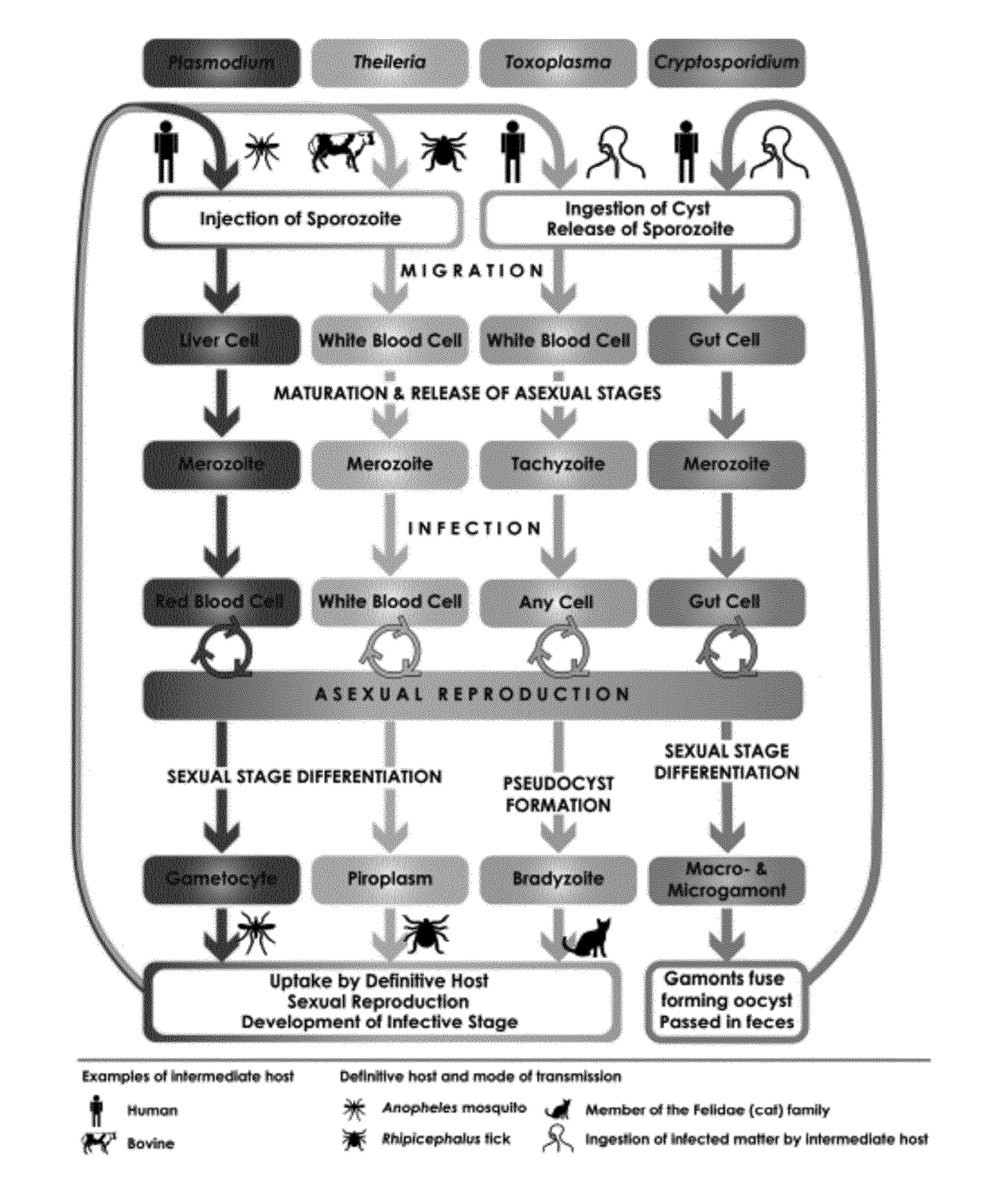Vaccines against apicomplexan pathogens
a technology of apicomplexan and vaccine, applied in the field of fusion proteins, can solve the problems of malaria, significant economic burden and global healthcare challenge, and infected, and achieve the effect of reducing the risk of malaria and increasing the risk of malaria
- Summary
- Abstract
- Description
- Claims
- Application Information
AI Technical Summary
Benefits of technology
Problems solved by technology
Method used
Image
Examples
Embodiment Construction
[0067]The present disclosure pertains to therapeutically and diagnostic fusion proteins, compositions and antibodies suitable as human and / or animal vaccines against parasites of the phylum Apicomplexa, in particular against parasites of the genus Plasmodium like Plasmodium falciparum.
[0068]In advantageous embodiments, the recombinant fusion proteins and compositions according to the present disclosure combine heat stable fragments from different Apicomplexa surface proteins from different stages of the parasite development, wherein each heat stable fragment comprises at least one folded domain.
[0069]One advantage of using heat stable fragments with folded domains in place of full-length antigen proteins is to circumvent the limitation of the protein size, to allow better fusion protein heat stability and to improve the protein expression capacity.
[0070]Surprisingly, the inventors found that using isolated heat stable fragments with folded domains as building blocks for the manufac...
PUM
| Property | Measurement | Unit |
|---|---|---|
| temperature | aaaaa | aaaaa |
| temperature | aaaaa | aaaaa |
| temperature | aaaaa | aaaaa |
Abstract
Description
Claims
Application Information
 Login to View More
Login to View More - R&D
- Intellectual Property
- Life Sciences
- Materials
- Tech Scout
- Unparalleled Data Quality
- Higher Quality Content
- 60% Fewer Hallucinations
Browse by: Latest US Patents, China's latest patents, Technical Efficacy Thesaurus, Application Domain, Technology Topic, Popular Technical Reports.
© 2025 PatSnap. All rights reserved.Legal|Privacy policy|Modern Slavery Act Transparency Statement|Sitemap|About US| Contact US: help@patsnap.com



